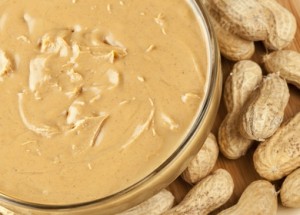
The good ole’ peanut butter and jelly sandwich is the lunchbox staple that never seems to lose its appeal. But… how good is peanut butter, really?
It is time to put this nutty, smooth spread to the test.
First, we must clarify that we are talking about “real” peanut butter here not the stuff that passes as peanut butter. So, the spreads that are loaded with soybean oil and sugar are not even worth our time discussing – suffice it to say you should always stay away from these imposters.
The Good
Peanut butter is tasty and quite delicious, most people would agree. There is just something about the way it spreads or tastes in your mouth that makes it so appealing to so many.
It does contain a good amount of niacin, folate, magnesium and thiamin which is a plus. In addition, peanut butter is rich in polyphenols and also contains some resveratrol and CoQ10 which is good for the heart.
The Bad
Peanut butter contains naturally occurring aflatoxins, or mycotoxins, produced by members of the Aspergillus fungus family that are found all over the world. Peanuts are highly susceptible to this soil fungus that colonizes in storage.
Along with peanuts, cottonseed and corn are the most affected by this fungus. The liver metabolizes aflatoxins, and at high doses, they become carcinogenic. Elevated blood levels of aflatoxin have been thought to cause stunted growth in children
The Ugly
While you enjoy your delectable spoon of peanut butter, you don’t think that it may contain rat hair. This is just another item that the Food and Drug Administration calls “natural contaminants,” along with other insect parts.
According to research into these so called “natural” contaminants, peanut butter may contain as many as 30 or more insect pieces in each 100 grams, and an average of 1 or more hairs from a rodent in each 100 grams.
While the average consumer may be unaffected by these not-so-tasty additions, people with allergies or asthma may become irritated by their presence.
An Ohio University fact sheet states that we consume from one to two pounds of insects in our food each year without even knowing it. Yummy!
Fresher Peanut Butter
 To reduce the risk of contamination by fungus or bug parts, try making your own peanut butter. It is really quite simple.
To reduce the risk of contamination by fungus or bug parts, try making your own peanut butter. It is really quite simple.
Ingredients:
- 2 cups of shelled, raw and roasted organic peanuts
- 2 tablespoons of coconut oil
Instructions:
- Use the food processor blade in your blender to chop the peanuts
- Blend in the oil and mix again
- Add a touch of Himalayan salt and a touch of coconut crystals to taste
- Store in the refrigerator or freeze (it will keep forever in the freezer)
-The Alternative Daily

